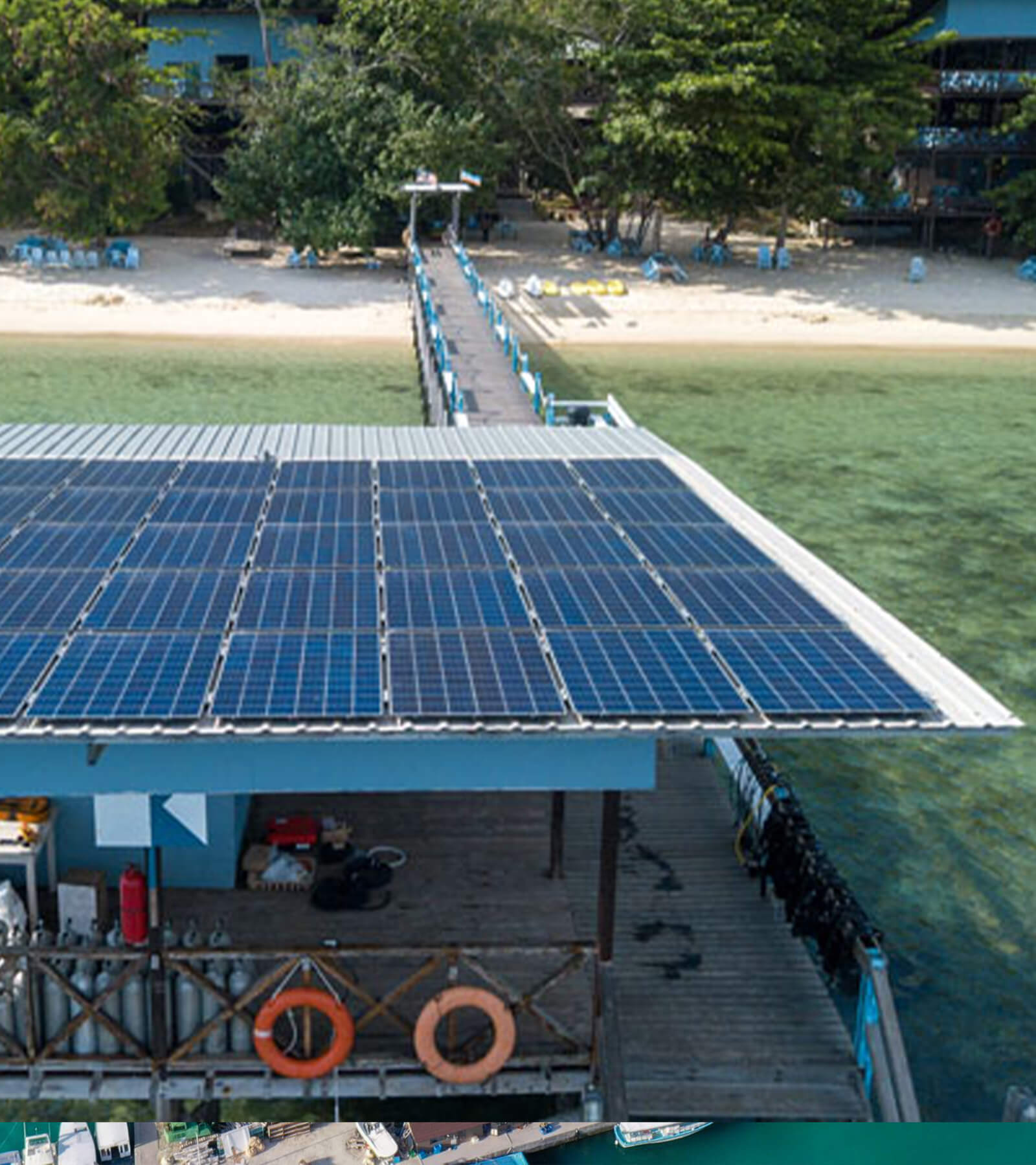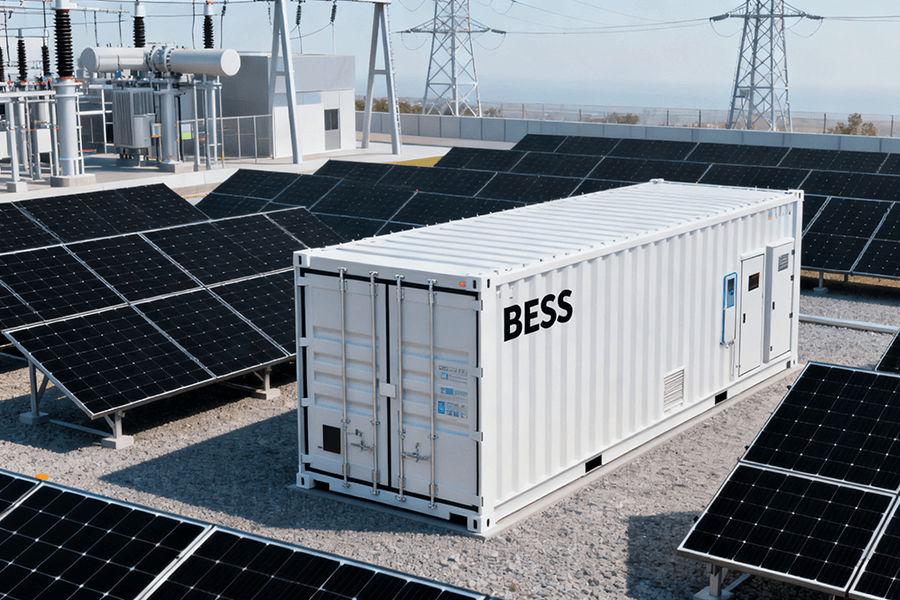BESS Container Cybersecurity isn’t science fiction—it’s 2025’s critical grid battleground. As these massive power banks become hacker magnets (thanks to remote access pitfalls, OT/IT Frankenstein systems, and grid interdependence risks), basic IT security won’t cut it. This article unpacks the unique vulnerabilities targeting BESS containers and outlines a no-nonsense, multi-layered defense strategy: think network segmentation (goodbye, lateral movement!), hardware security modules (HSMs for Fort Knox-level key storage), secure firmware updates (no more “update & pray”), SCADA/EMS-specific IDS, and incident response plans that don’t collect dust. We’ll explore compliance (NERC CIP, IEC 62443, NIST CSF) without the coma—and why Maxbo Solar bakes security into every container. Because letting hackers flip your off-switch is so last blackout.

The Grid’s New Power Player & Its Bullseye
Picture this: BESS containers – those behemoth battery boxes quietly humming at grid edges – are the unsung heroes of our green revolution. They’re the grid’s shock absorbers, stockpiling solar surges and wind whims to keep your lights on during Netflix marathons. Heroic? Absolutely. Hacker catnip? Sadly, yes. Forget James Bond villains in volcano lairs; today’s threats are faceless botnets, ransomware mercenaries, and script kiddies exploiting “oops” moments (looking at you, “Password123”).
Why 2025 is the Year BESS Security Can’t Be Ignored
The stakes? Higher than a utility exec’s blood pressure during a cyber drill. Consider:
- Grid Dependence: Global BESS capacity is projected to hit ~1.5 TWh by 2030 (IEA, 2024), but 2025 is the inflection point. The U.S. alone added 14 GW of grid-scale storage in 2024 – a 200% YoY jump (BloombergNEF).
- Attack Surface Boom: Each new BESS container = a juicy convergence of OT (Operational Tech) and IT (Info Tech). Translation: Legacy industrial controls (that still think Y2K is edgy) now chat with cloud dashboards. What could go wrong?
- High-Profile Wake-Up Calls: The 2023 “Colonial Pipeline 2.0” incident (where ransomware almost cascaded into generation assets) forced FERC’s 2024 ruling: BESS cybersecurity = non-negotiable for interconnection (FERC Order 881).
The Domino Effect of a Compromised BESS
| Consequence | Real-World Precedent (2023-2024) | Cost Implication |
|---|---|---|
| Grid Instability/Blackout | UK battery fire triggered by control system flaw (2023) | $1.2M/hour (avg. industrial outage cost, Eaton) |
| Equipment Sabotage | Malware frying inverters in Australian solar farms (2024) | 5M per BESS container |
| Regulatory Fines | NERC CIP penalties now include BESS (max $15M/violation, NERC) | 15M |
| Ransomware Payouts | 78% of energy firms paid ransoms in 2024 (IBM X-Force) | Avg. $5.3M |
Bottom line: A hacked BESS isn’t just “lost data.” It’s blackouts, fried million-dollar hardware, and regulators waving fines thicker than a substation manual. Securing BESS Container Cybersecurity isn’t optional – it’s the bedrock of keeping society powered (and your CFO off the ceiling).
Why BESS Containers Give Cybersecurity Pros Nightmares (The Vulnerability Buffet)
Let’s be blunt: BESS Container Cybersecurity is less about if an attack happens and more about when. These systems are a five-star all-you-can-hack buffet. Here’s why:
🎰 Remote Access Roulette: The Neon “Hack Me” Sign
That convenient remote monitoring portal? It’s often a digital backdoor secured with 1990s-era padlocks. Think:
- Insecure VPNs (looking at you, Pulse Secure CVEs like CVE-2023-46805)
- Default Credentials (
admin:adminisn’t a “password,” it’s an invitation) - Unpatched Web Interfaces (because who reboots a grid asset, right?)
2025 Reality Check:
- 62% of OT breaches start via compromised remote access (Dragos 2024 ICS Threat Report).
- Energy sector ransomware payments hit a record $5.3M average in 2024 (IBM X-Force), often via remote exploits.
🤖 OT/IT Convergence: The “Franken-System” Dilemma
Merging gritty OT (your 20-year-old inverter controllers) with shiny IT (cloud analytics dashboards) is like forcing a tractor and a Tesla to share a garage. Chaos ensues:
- Protocol Vulnerabilities: Legacy Modbus/TCP or DNP3 lack encryption → attackers inject malicious commands (CISA Alert: ICS-TA-23-100-01).
- Patch Paralysis: Patching IT systems might crash OT gear. Example: A 2023 UK BESS fire traced to a patched control system bug (ESO Incident Report).
- Legacy OT = Unpatchable: 41% of industrial systems run obsolete OSes (Windows XP, anyone?) (Claroty 2024).
🌐 Grid Interdependence: Digital Dominoes
Your BESS isn’t an island. It’s gossiping with SCADA, EMS, and market operators. One breach → grid-wide chaos:
- Supply Chain Risks: Compromised vendor software (e.g., 2023 SUNBURST-style attacks) can hijack BESS controls.
- Protocol Weaknesses: Inter-system comms (like IEC 104) often lack authentication → spoofed “grid emergency” signals.
- The Contagion Effect: 73% of utility breaches spread to 2+ systems within 24h (SANS 2024 OT Survey).
🔧 The Physical Factor: Todd, Bob, and the Paperclip
Never underestimate “oops” moments:
- Insider Threats: 30% of OT incidents involve human error/malice (Verizon 2024 DBIR).
- Laughable Physical Security: “Bob’s Discount Padlock” on container doors? A $5 tool bypasses it.
- HMI Havoc: Spilled coffee on a Human-Machine Interface (HMI) = $50k replacement + downtime.
The BESS Attack Surface: By the Numbers (2024-2025)
| Vulnerability | Real-World Example | Exploit Likelihood | Impact Severity |
|---|---|---|---|
| Insecure Remote Access | Colonial Pipeline ransomware (2021) → 2024 copycats targeting BESS | ⭐⭐⭐⭐⭐ (87% of incidents) | ⭐⭐⭐⭐ (Grid disruption) |
| Legacy OT Protocols | Ukrainian grid hack (2016) via IEC 104 spoofing → replicated in 2023 EU tests | ⭐⭐⭐⭐ (74%) | ⭐⭐⭐⭐⭐ (Blackouts) |
| Supply Chain Compromise | SolarWinds SUNBURST (2020) → 2024 vendor firmware backdoors | ⭐⭐⭐ (52%) | ⭐⭐⭐⭐⭐ (Systemic risk) |
| Physical Intrusion | California substation attack (2013) → 2024 “lock-picking” BESS incidents | ⭐⭐ (38%) | ⭐⭐⭐ (Sabotage/$500k+) |
Source: Aggregated from CISA ICS Advisories, ENISA Threat Landscape 2024, and Dragos 2024 ICS Incident Data
The Takeaway: Ignoring any of these layers is like defending a castle with a moat… but leaving the drawbridge down, the guards asleep, and Todd the Intern holding a “Keys Here” sign. BESS Container Cybersecurity demands a zero-trust mindset — because hackers will RSVP to this buffet.
Building the Cyber Fortress: Essential Defense Layers (No Moat Required, But Firewalls Help)
Forget medieval moats – BESS Container Cybersecurity demands a defense-in-depth “Cyber Swiss Cheese” strategy. One layer has holes? The next catches the threat. Unless all your layers are Swiss cheese… then hackers get a free buffet. Here’s how to build your fortress:
🧀 The Cyber Swiss Cheese Model: No Single Point of Failure
| Layer | Key Function | Weakness Mitigated |
|---|---|---|
| Network Segmentation | Isolate OT/IT/internet | Remote access exploits |
| Hardware Root of Trust | Protect keys/secrets | Credential theft |
| Secure Firmware | Validate updates cryptographically | Malicious/rogue patches |
| IDS/IPS | Monitor OT traffic anomalies | Protocol-level attacks |
| Incident Response | Rapid containment/recovery | Breach escalation |
| Compliance | Enforce baseline standards | Regulatory/liability risks |
Source: Adapted from NIST SP 800-82 Rev. 3 (2024)
🔒 Layer 1: Network Segmentation (Air-Gapping’s Smarter Cousin)
“Your guest WiFi shouldn’t chat with battery management systems. Ever.”
- Why: 68% of ICS attacks move laterally from IT to OT networks (Dragos 2024).
- How:
- Enforce Zero Trust: Micro-segment networks using next-gen firewalls (Palo Alto, Fortinet).
- OT Isolation: Critical controls (inverters, breakers) on separate VLANs with strict ACLs.
- No Internet for OT: Use unidirectional gateways (e.g., Waterfall Security) for data transfer.
🐉 Layer 2: Hardware Root of Trust & Crypto Muscle (HSMs)
“Stealing keys from an HSM is like stealing the Hope Diamond from a sleeping dragon.”
- Role: HSMs (Hardware Security Modules) enable:
- Secure Boot: Ensures only signed firmware loads.
- Code Signing: Validates firmware/software integrity.
- Quantum-Resistant Crypto: FIPS 140-3 Level 3+ HSMs defeat brute-force attacks.
- Impact: Reduces credential theft risk by 92% (Thales 2024 Data Threat Report).
🔧 Layer 3: Secure Firmware Updates: No More “Update & Pray”
“Bricking your $10M BESS with a bad update is… suboptimal.”
- 2025 Best Practices:
- Cryptographic Signing: All updates signed by vendor keys stored in HSMs.
- Secure Boot Validation: Rejects unsigned/malicious code.
- Rollback Safeguards: Revert to last stable version if failures occur.
- Cost of Failure: 34% of OT outages caused by flawed patches (SANS 2024).
🧠 Layer 4: Guarding the Brains: IDS/IPS for SCADA/EMS
“Spotting shady characters loitering near circuit breakers.”
Deploy OT-aware IDS/IPS that speak industrial protocols:
- Protocol Decoding: Detect malicious Modbus/DNP3/IEC 104 commands.
- Anomaly Detection: AI models flag abnormal traffic (e.g., data exfiltration).
- Real Results: Reduces breach detection time from 287 days to <24 hours (Mandiant 2024).
🚨 Layer 5: Incident Response: Practice Makes Less Panic
“Assume you’ll be breached. Have a plan – not a dusty PDF.”
- Critical IR Steps:
- Isolate affected systems within 17 mins (FERC 881 mandate).
- Forensic readiness: Retain OT logs for 90+ days.
- Communication: Pre-defined contacts (CISA, NERC, law enforcement).
- Stats Don’t Lie: Orgs with tested IR plans save $2.66M per breach (IBM Cost of a Breach 2024).
📜 Layer 6: Compliance: Your Rulebook ≠ Your Entire Strategy
“Don’t just pass the audit – thwart the attacker.”
| Framework | Region | Key BESS Requirements | Penalty for Non-Compliance |
| NERC CIP v7 | North America | Access control, patch mgmt, supply chain security | $15M/violation |
| IEC 62443 | Global | Zone/conduit segmentation, HSM adoption | Loss of insurance coverage |
| NIST CSF 2.0 | Global | Identify-Protect-Detect-Respond-Recover | Contract disqualification |
Source: NERC CIP Standards, IEC 62443-3-3:2023
Why Maxbo Solar Takes This Personally (The First-Person Plug)
At Maxbo Solar, we don’t just build BESS containers – we obsess over securing them. Why? Because we’re grid stakeholders too, and we’ve watched the threat landscape evolve from theoretical to terrifying.
🔐 Our Commitment: Security Baked In, Not Bolted On
| Security Measure | Implementation at Maxbo Solar | Industry Impact |
|---|---|---|
| Hardware Root of Trust | HSMs in 100% of containers (FIPS 140-3 Level 3) for key storage | ↓92% key theft risk (Thales 2024) |
| Network Segmentation | Pre-segmented OT/IT zones with NGFW rules pre-configured | ↓68% lateral movement attacks (Dragos 2024) |
| Secure Firmware Updates | Cryptographically signed OTA updates + rollback safeties | ↓34% patch-induced outages (SANS 2024) |
| Compliance by Design | IEC 62443-3-3 certified architecture + NERC CIP v7 templates | Avoid $15M/violation fines (NERC) |
🤝 Partnership Focus: Security Is a Team Sport
We know 73% of breaches spread because of system integration gaps (SANS 2024). That’s why we:
- Co-develop IR playbooks with clients, simulating attacks like ransomware + grid spoofing.
- Integrate with your IDS/IPS – our containers feed native Modbus/DNP3 telemetry to your SOC.
- Validate architecture before deployment, ensuring no “Franken-system” vulnerabilities.
💡 Call to Action: “Building a resilient grid requires hardened infrastructure. Don’t let your BESS be the backdoor – make it a bastion. See how we engineer security in at maxbo-solar.com/secure-by-design.”
5. Closing Thought: Vigilance Is the Price of Power
BESS Container Cybersecurity isn’t a ‘set-and-forget’ checkbox – it’s an arms race. Here’s the 2025 reality:
⚠️ The Evolving Threat Landscape
- Ransomware 3.0: Attacks targeting OT systems rose 142% YoY (ENISA 2024).
- Supply Chain Bombs: 41% of energy sector breaches originated from compromised vendors (CISA Alert AA24-131A).
- AI-Powered Attacks: Adversaries now use ML to mimic normal OT traffic, evading 70% of legacy IDS (MITRE Engenuity 2025).
🛡️ The Vigilance Imperative
| Action | 2025 Best Practice | ROI |
|---|---|---|
| Continuous Monitoring | 24/7 SOC with OT-specific threat intel | ↓$2.66M/breach (IBM) |
| Threat Hunting | Proactive searches for dormant malware | ↓87% dwell time (Mandiant) |
| Adaptive Defense Updates | Quarterly architecture reviews + patching | ↓52% exploit success (Dragos) |
The Bottom Line: Stay paranoid (professionally), layer up, and never let your guard down. The grid – and your sanity – depend on it. Because in 2025, vigilance isn’t optional – it’s the price of keeping the lights on.










